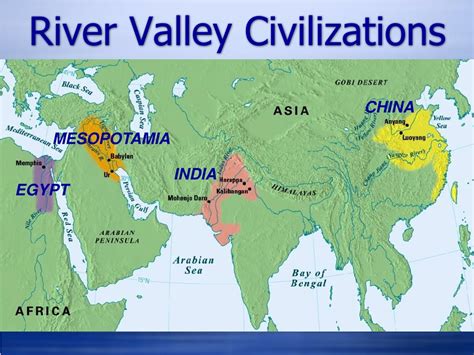How River Valleys Shaped Civilizations

Introduction: A Flowing Journey Through History
From the earliest days of human settlement, the meandering paths of river valleys have been pivotal in shaping the very fabric of civilization. These natural corridors provided more than just a means of navigation and transportation; they were lifelines, nurturing the growth of ancient societies and leaving an indelible mark on the course of human history. Let’s embark on a journey to explore how the gentle flow of rivers has carved the destiny of nations.
The Cradle of Civilization: A River’s Embrace
Imagine a time when the world was young and untamed, and the first sparks of civilization ignited along the banks of mighty rivers. The Nile, Tigris, and Euphrates, to name a few, were not just bodies of water but the very lifeblood of ancient cultures. Here, the story of humanity’s evolution is deeply intertwined with the ebb and flow of these majestic waterways.
In the cradle of civilization, river valleys offered a unique blend of resources and challenges. The annual floods, once a daunting threat, soon became a blessing, enriching the soil and making agriculture possible. The fertile lands alongside these rivers were the birthplaces of some of the world’s oldest and most influential civilizations, including ancient Egypt, Mesopotamia, and the Indus Valley.
These early societies learned to harness the power of the rivers, developing irrigation systems and cultivating crops that sustained their growing populations. The stability and abundance offered by river valleys allowed for the emergence of complex social structures, the development of arts and sciences, and the establishment of trade networks that connected diverse communities.
A Network of Connections: Trade and Cultural Exchange
Rivers acted as natural highways, facilitating the movement of goods, ideas, and people. The flow of trade along these waterways created vibrant economic hubs, fostering the exchange of knowledge, technology, and cultural practices. Imagine the bustling river ports, where merchants from far-flung lands converged, bartering exotic goods and sharing stories of distant lands.
The influence of river valleys extended beyond their immediate banks. Trade routes expanded, connecting river systems and creating vast networks that spanned continents. The Silk Road, for instance, is a testament to the power of rivers in shaping global connections. Originating in ancient China and crisscrossing Central Asia, this legendary trade route relied heavily on rivers like the Yellow and Yangtze, which provided vital transportation links.
Cons: - Vulnerability to Floods: The very floods that enriched the soil could also bring destruction, posing a constant threat to settlements. - Limited Access: Not all regions could benefit from river trade, leading to isolated pockets of development.
The Engineering Marvels: Dams and Water Management
As civilizations grew more complex, so did their interactions with river valleys. Ancient engineers developed innovative solutions to harness the power of rivers, constructing dams and irrigation systems that transformed landscapes and shaped the course of history.
The Great Wall of China, for example, is not just a barrier against invaders but also a testament to water management. The wall incorporates numerous dams and reservoirs, showcasing the advanced understanding of hydraulic engineering that ancient Chinese civilization possessed.
In ancient Egypt, the construction of the Aswan Dam, though a modern addition, reflects the enduring legacy of water management in the Nile Valley. This dam, built in the 1960s, controls the flow of the Nile, providing a stable water supply for agriculture and hydroelectric power.
A Legacy of Influence: River Valleys Today
The impact of river valleys on civilization is a legacy that continues to shape our world today. Many of the world’s largest cities, such as London, Paris, and Tokyo, are located along major rivers, benefiting from the resources and transportation these waterways provide.
Furthermore, the study of ancient river civilizations has provided invaluable insights into the development of human societies. Archaeologists and historians continue to uncover the secrets of these early settlements, offering a deeper understanding of our shared history and the factors that have shaped the world we live in.
FAQ
What is the significance of river valleys in the development of early civilizations?
+River valleys played a pivotal role in the emergence and growth of early civilizations. They provided fertile land for agriculture, a stable water source, and natural transportation routes, all of which were essential for the development of complex societies.
How did river valleys impact the spread of trade and culture?
+River valleys acted as natural trade routes, facilitating the movement of goods and people. This led to the exchange of ideas, technologies, and cultural practices, fostering the growth of diverse and interconnected civilizations.
What are some famous ancient civilizations that flourished in river valleys?
+Ancient Egypt, Mesopotamia, and the Indus Valley Civilization are among the most renowned ancient civilizations that thrived in river valleys. These societies developed advanced agricultural practices, complex social structures, and rich cultural traditions.
How do river valleys continue to influence modern societies?
+Many of today’s major cities are located along river valleys, benefiting from their resources and transportation advantages. Additionally, the study of ancient river civilizations provides valuable insights into the development of human societies, shaping our understanding of history and our approach to modern challenges.



